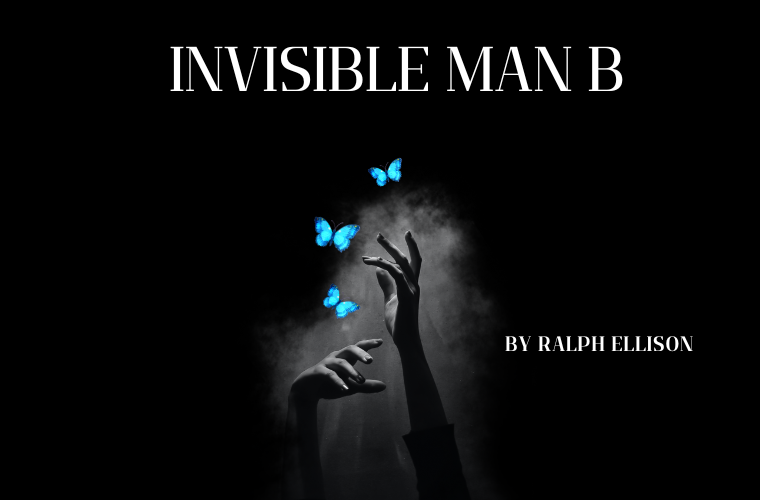About Author
Ralph Ellison (1913-1994) was an African American novelist, literary critic, and scholar Invisible Man by Ralph Ellison. He was born in Oklahoma City, Oklahoma, and grew up in a family that valued education and intellectual curiosity. After studying music and literature at the Tuskegee Institute in Alabama, Ellison moved to New York City in 1936. Where he began to establish himself as a writer and intellectual.
Ellison’s most famous work is his novel Invisible Man, which published in 1952 to critical acclaim. The novel explores the themes of identity and invisibility in the context of the African American experience, and is considered a classic of American literature.
Ellison was heavily influenced by the work of T.S. Eliot and other modernist writers, and his writing style is characterized by its complexity, allusiveness, and use of symbolism. Invisible Man by Ralph Ellison
In addition to his fiction writing, Ellison was also a prominent literary critic and essayist. He wrote extensively on the subject of African American literature and culture, and was know for his incisive analyses of the work of writers such as Richard Wright and Langston Hughes. His essays and criticism collected in several volumes, including Shadow and Act (1964) and Going to the Territory (1986).
Ellison received numerous awards and honors during his lifetime, including the National Book Award for Fiction in 1953 and the Presidential Medal of Freedom in 1969. He was also a professor at several universities, including Rutgers University and New York University, where he taught creative writing and literature.
Today, Ralph Ellison is widely regarded as one of the most important writers and thinkers of the 20th century. His work continues to be studied and celebrated for its insights into the complexities of race, identity, and culture in America.
A Summary
Ralph Ellison’s Invisible Man is a powerful and thought-provoking novel. That explores the issues of identity, race, and social justice in America. The novel follows the story of an unnamed narrator. Who is invisible, both figuratively and literally, in a society that refuses to acknowledge him as an individual.
Set in the mid-20th century, the novel portrays the struggles of African Americans during a time of rampant racism and discrimination. The protagonist of the story is a young, educated man.
Who believes that his intelligence and hard work will be enough to overcome the barriers of racism and achieve the American Dream. However, he soon realizes that his efforts are futile as he encounters various obstacles that prevent him from achieving his goals.
Throughout the novel, the protagonist’s journey takes him through. A series of disillusionments, betrayals, and tragedies that force him to question his own identity and purpose in life.
He eventually realizes that the society he lives in is not only racist. But also actively seeks to maintain the status quo by suppressing the voices of those who challenge the system.
However, Ellison’s novel is a deeply philosophical and poignant work that offers a powerful critique of American society’s treatment of African Americans. It is a novel that explores the themes of identity, individuality, and social responsibility in a way that is both engaging and challenging.
Uncovering the Themes and Motifs
Ralph Ellison’s Invisible Man is a richly layered and complex novel that explores a variety of themes and motifs. Through his narrative style and vivid imagery. Ellison delves deep into the issues of identity, race, and social injustice, creating a powerful and thought-provoking work of literature.
One of the central themes in Invisible Man is the search for identity. The protagonist of the story is a young African American man. ho struggles to define himself in a society that refuses to acknowledge his individuality.
Throughout the novel, he confronts a series of challenges and obstacles that force him to question his own identity and his place in the world.
Another important theme in Invisible Man is the power of language. The protagonist
t is a gifted orator, and throughout the novel, he uses his ability to speak to express his thoughts and ideas. However, he soon realizes that words can also be used to manipulate and control, and that those in power often use language to suppress the voices of those who challenge the status quo.
The motif of invisibility is also a recurring theme in the novel. The protagonist is both figuratively and literally invisible, and this serves as a powerful metaphor for the ways in which African Americans marginalized and silenced in American society. Through his invisibility, the protagonist is able to observe and reflect upon the world around him, but he is also isolated and powerless.
Other important themes and motifs in Invisible Man include the destructive nature of racism, the struggle for social justice, and the search for meaning and purpose in life. Through his vivid imagery and powerful storytelling, Ellison creates a work of literature that is both challenging and inspiring.
Analyzing the Complex Characters
Ralph Ellison’s Invisible Man is a novel that features a wide range of complex and dynamic characters. Through his vivid descriptions and intricate characterizations, Ellison creates. A world that is both vivid and engaging, populated by a diverse cast of individuals who challenge the protagonist’s assumptions and beliefs.
The protagonist of the novel is a young African American man. Who is both ambitious and idealistic. He believes that his intelligence and hard work will be enough to overcome the barriers of racism and achieve success in American society. However, he soon discovers that the world is far more complex than he initially realized, and that his assumptions about himself and the people around him are flawed.
One of the most complex and enigmatic characters in the novel is Ras the Exhorter, a charismatic and militant African American leader. Who seeks to mobilize his community against the forces of oppression. Ras represents a stark contrast to the protagonist, who is initially hesitant to embrace radical activism.
Through Ras, Ellison explores the tensions and conflicts within the African American community, and the various strategies that individuals employ to confront racism and discrimination.
Other important characters in the novel include Dr. Bledsoe. The head of the protagonist’s college, who embodies the complexities and contradictions of black leadership, and Brother Jack. Moreover, the white leader of the Brotherhood, a political organization that seeks to promote social justice.
Through these and other characters, Ellison creates a richly textured world that reflects the diversity and complexity of American society. Invisible Man by Ralph Ellison
Examining the Historical Context
Ralph Ellison’s Invisible Man is a novel that is deeply rooted in the historical context of the mid-twentieth century. Set against the backdrop of the Civil Rights Movement and the growing tensions between African Americans and white Americans, the novel explores the complexities of race and identity in America.
The protagonist of the novel is a young African American man. Who is deeply influenced by the social and political changes taking place in America during the 1940s and 1950s. As he navigates the various obstacles and challenges that. He encounters, he is forced to confront the realities of racial inequality and discrimination.
Ellison himself was deeply involved in the Civil Rights Movement, and his experiences as. A writer and activist informed the themes and motifs of Invisible Man. Through his novel, he sought to explore the various dimensions of African American experience.
One of the key historical events that influenced the writing of Invisible. However, the man was the Harlem Renaissance, a cultural movement that emerged in the 1920s and 1930s and sought to promote African American art and literature. Ellison was deeply influenced by the writers and intellectuals of. The Harlem Renaissance, and their ideas and philosophies are reflected in the novel. Invisible Man by Ralph Ellison
Another important historical context for Invisible Man is the rise of communism and socialism in America during the mid-twentieth century. Ellison was deeply committed to the idea of social justice, and he believed that communism offered a viable alternative. The capitalist system that perpetuated racial inequality and discrimination.
Exploring the Themes of Identity and Invisibility
Ralph Ellison’s Invisible Man is a novel that explores the themes of identity and invisibility in a powerful and thought-provoking way. Through the experiences of its protagonist, Ellison examines the ways. Which society seeks to erase the identities of those who do not fit into its norms and expectations.
At the beginning of the novel, the protagonist is invisible, not in the literal sense. But in the sense that he is not see or acknowledged by society. However, he is a young African American man who is constantly overlooke and underestimated because of his race.
As he navigates the various obstacles and challenges that he encounters. He forced to confront the ways in which his identity is both imposed upon him and erased by others. Invisible Man by Ralph Ellison
One of the key themes of the novel is the idea that identity is a fluid and constantly evolving concept. The protagonist’s journey is marked by a series of transformations and epiphanies. As he grapples with the complexities of his own identity. The various forces that seek to define and control it.
Another important theme of the novel is the idea of invisibility as a form of resistance. Therefore, throughout the novel, the protagonist uses his invisibility as a tool to challenge.
The power structures and institutions that seek to control him. By refusing to be seen and acknowledged by society. He asserts his own agency and autonomy, and begins to forge a new sense of identity for himself.
The Symbolism of Light and Darkness
Light and darkness are recurring symbols in Ralph Ellison’s Invisible Man, representing. The protagonist’s journey towards self-discovery and his struggle to define his own identity.
Throughout the novel, these symbols are used to convey the complexities of race and identity, and the ways. In which they are shaped by social and cultural factors. Invisible Man by Ralph Ellison
Therefore, in the opening scene of the novel, the protagonist is in a basement room lit only by a bare lightbulb. This symbolizes his initial state of invisibility and his lack of agency and autonomy.
However, as the novel progresses, the protagonist becomes increasingly aware of the ways. In which he is being controlled and manipulated by others. He begins to see the world in a new light, and to question. The assumptions and expectations that have been imposed upon him.
Light and darkness also used to represent the tension between the protagonist’s individuality and his connection to the broader African American community. At times, the protagonist is drawn towards the light of individuality and self-discovery. He is also aware of the importance of community and solidarity.





